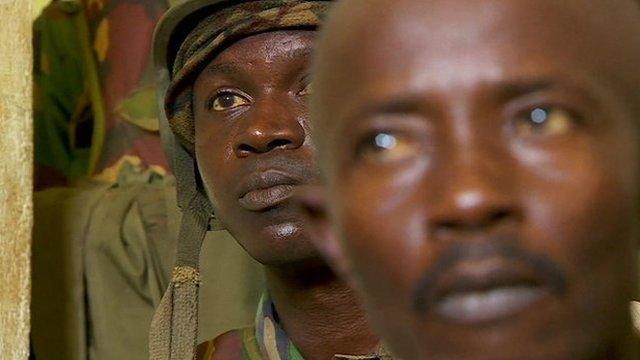Profile: Anas al-Liby
- Published

Al-Liby was charged with involvement in one of al-Qaeda's worst attacks
Anas al-Liby was accused by the US of being one of the masterminds behind the embassy bombings in Kenya and Tanzania in 1998, which killed 224 people.
He was one of several people indicted by a New York grand jury in 2000, and was later placed on the FBI's list of "most wanted terrorists".
But it was not until 13 years later that he was taken into US custody.
He was captured by US commandos in Tripoli on 5 October 2013 in a raid that stirred tensions with Libya. Many saw the operation as a breach of Libyan sovereignty.
Appearing in a federal court in New York, he pleaded not guilty to terrorism charges later in October 2013. He was due to stand trial in the city on 12 January 2015.
But Mr Liby's health deteriorated rapidly in the weeks leading up to the hearing and he died in hospital on 2 January. He is thought to have suffered from liver cancer.
'Very significant'
Malcolm Vance, a former US intelligence officer, described Mr Liby's capture as one of US intelligence's "top finds" since the death of al-Qaeda leader Osama Bin Laden.
He is believed to have been a computer specialist with al-Qaeda, and later an operational combat commander who had been in Afghanistan and Pakistan with the group's leadership.
"It was very significant that he came back to Libya to what... appears was a very large broad-scale interlinking of all the al-Qaeda organisations in north Africa [he was going to organise]," Mr Vance added.
Mr Liby was accused of discussing with other al-Qaeda members a possible attack against the US embassy in the Kenyan capital, Nairobi, in retaliation for the American military intervention to restore peace in Somalia.

Anas Liby pleaded not guilty to terrorism charges in court hearings
He was also alleged to have carried out "visual and photographic surveillance" of the building in 1993 and "reviewed files" concerning possible attacks on Western interests in East Africa.
Intelligence officials interrogated Mr Liby for a week after his capture aboard the USS San Antonio in the Mediterranean, according to reports.
He was taken to the US when his health began to deteriorate after he stopped eating and drinking, US officials said.
Civil war
Anas al-Liby was born in the Libyan capital, Tripoli, in 1964. His real name was Nazih Abdul-Hamed al-Ruqai.
He is believed to have studied electronic and nuclear engineering, graduating from Tripoli University.
The FBI listed several other aliases for him, including Anas al-Sabai and Nazih al-Raghie.
His involvement with al-Qaeda was thought to date from the early 1990s in Sudan. It is suggested he fled Sudan for Afghanistan when Bin Laden was forced to leave.
A Human Rights Watch document from 2007 also suggests he may have been detained by the CIA in 2002.
Mr Liby, an activist opposed to the rule of Libyan leader Muammar Gaddafi, was subsequently given political asylum in the UK - under unclear circumstances, the Guardian, external newspaper reports. He is believed to have lived in Manchester.
Some reports suggest he was arrested by British police in 1999 and terrorist training manuals were found in his flat. But he appears to have either fled the country or been released for lack of evidence.
The date of his return to Libya is unclear, possibly before or during the civil war in 2011 which led to the overthrow of Col Gaddafi.
A close friend, quoted by the Associated Press news agency, suggested that Mr Liby's family had returned a year before the civil war under a policy introduced by Gaddafi's son, Saif al-Islam, to promote reconciliation with regime opponents who gave up violence.
After his capture and transfer from Libya, Mr Liby appeared destined for trial in the US where more light was expected to be shed on his alleged role in one of al-Qaeda's deadliest attacks.
After his death, Mr Liby's wife told the Associated Press he had undergone liver surgery several weeks earlier and had suffered complications.
She accused the US government of "kidnapping, mistreating, and killing an innocent man".
- Published16 June 2015

- Published24 September 2013

- Published22 December 2017
